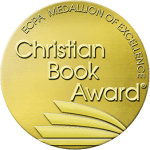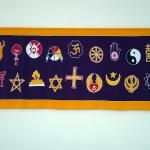Revelation 21:1 concludes the last section of chapter 20, but also inaugurates a new section of the text. It’s a Janus passage, looking both back and forward.
21:1-8 concludes the large section begun in 17:1-2, the fourth “in Spirit” vision of the book. The section is divided into smaller bits by some of John’s characteristic discourse markers:
1. “And I saw,” v. 1.
2. “And I saw,” v. 2.
3. “And I heard a voice from the throne,” v. 3.
4. “The one who sits on the throne said,” v. 5.
5. “And he said,” v. 5b.
6. “And he said,” v. 6.
As the beginning of chapter 21, it inaugurates a five-verse section that has a clear chiastic frame:
A. And I saw: New (kainon) heaven and new (kainen) earth, v 1a.
B. First (protos) heaven and first (prote) earth passed away, v. 1b.
C. No longer (ouk estin eti) any sea, v. 1c.
. . . .
C’. No longer (ouk estin eti) death, mourning, crying, pain. v. 4a.
B’. First things have passed (ta prota apelthan), v. 4b.
A’. He who sits on throne: I make all things new (kaina poio panta), v. 5a.
The frame is so obviously chiastic that we are encouraged to examine whether the intervening verses (2-3) are also arranged chiastically. This does work, despite the fact that both verses 2 and 3 begin with an intervention from the author – “and I saw,” then “and I heard.” The vision is explained verbally, but the two go together:
D. And I saw: holy city, new Jerusalem, v. 2a.
E. Prepared as a bride adorned for her husband, v. 2b.
E’. And I heard: Tabernacle of God is among men, v. 3a.
D’. They shall be His people, He their God, v. 3b.
The parallels are not as obvious as they might be, but they reward some musing. The structure appears to link the holy city with God’s promise to be the God of His people. What makes the city holy is God’s choice of that city as His own; holy things are things consecrated by God as His peculiar property. The B/B’ section makes sense in terms of biblical symbolism, since the tabernacle is a bridal garments for Israel (cf. Ezekiel 16).
The final clause in D’ is itself a cool little word picture. In Greek: autos ho theos / met’ auton / estai / auton / theos. In English: Himself God / with them / is / their / God. The sentence is framed by “God Himself” and “God of them.” The word “God” protectively surrounds the sentence as God encircles His holy city and bride. The first part of the sentence mimics the Hebrew “Emmanuel,” God with them, and at the center of the sentence is the verb of being: The God who is is the God who is with them; the God who is has determined He will not be God without them. Couldn’t make Barth any happier.














